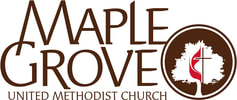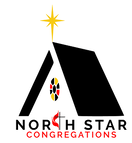Put Your Hand in My Side
Doubt, Faith and the Church of The Risen Lord Maple Grove UMC Easter 2, 2021 April 11, 2021 Rev. Patricia Wagner John 20:19-31 19When it was evening on that day, the first day of the week, and the doors of the house where the disciples had met were locked for fear of the Jews, Jesus came and stood among them and said, “Peace be with you.” 20After he said this, he showed them his hands and his side. Then the disciples rejoiced when they saw the Lord. 21Jesus said to them again, “Peace be with you. As the Father has sent me, so I send you.” 22When he had said this, he breathed on them and said to them, “Receive the Holy Spirit. 23If you forgive the sins of any, they are forgiven them; if you retain the sins of any, they are retained.” 24But Thomas (who was called the Twin), one of the twelve, was not with them when Jesus came. 25So the other disciples told him, “We have seen the Lord.” But he said to them, “Unless I see the mark of the nails in his hands, and put my finger in the mark of the nails and my hand in his side, I will not believe.” 26A week later his disciples were again in the house, and Thomas was with them. Although the doors were shut, Jesus came and stood among them and said, “Peace be with you.” 27Then he said to Thomas, “Put your finger here and see my hands. Reach out your hand and put it in my side. Do not doubt but believe.” 28Thomas answered him, “My Lord and my God!” 29Jesus said to him, “Have you believed because you have seen me? Blessed are those who have not seen and yet have come to believe.” 30Now Jesus did many other signs in the presence of his disciples, which are not written in this book. 31But these are written so that you may come to believe that Jesus is the Messiah, the Son of God, and that through believing you may have life in his name. They were hidden in a room. Everything was shuttered, everything shattered, the cross did not hang before them in burnished beauty, it was a gallows, still there outside the city. The women, Mary, Martha, Salome had told them their experience at the tomb but they doubted them until Jesus enters their locked room and breathes on them. Thomas doubts both what the women said and what the disciples recount until Christ comes to him and then he believes. John told this story so that those in the early church would realize that their own fears and doubts decades later were no anomaly. The church began as a community of doubt. And now we are in 2021. This past year has left us shuttered and shattered. So many questions about whether God was in this with us. All this death, and division among us. Two thousand years on, congregations and pastors are pondering if they can survive what this year has wrought, knowing that they, we, have all been changed. One way is to hold fast to our precepts, dig into our tradition. On Easter, I asked you to renew your baptism. Encouraged you to answer I Do, and Yes, to ancient questions of faith. For those who doubt, I asked you to lean into these vows with hope, to affirm even if warily. I want this for you, I realize, because after decades of continuous movement rom faith to doubt to faith and back again, that these ancient truths, bear a truth deeper than my understanding. And I was delighted when you said, "yes" and "I do". But the next day, on Monday this week, a beloved cousin came to visit. One who is not afraid of his questions and doubt, and he pushed back on the creeds and we worked through our ideas and questions together. I realized that when I nudge you to answer yes, when your hearts and mind say maybe, or no, is to afford you less than the Christ offered his own disciples. When Jesus appears in the upper room, he doesn't chide or criticize their doubts. He says, "Peace be with you" and then he returns, meets Thomas where he is, fills the room with grace, again and says, again, Peace be with you, put your hand in my wounded side. Believe I have risen. Those who can believe without seeing, are blessed, says, Jesus, but so, too, was Thomas whom the Christ gave room to question, space to grow. So, if any of you felt uncomfortable affirming those questions of the faith last week, If you, or someone you love is in a place of perplexity, quietly or openly challenging the faith, asking questions like Do I have to believe in bodily resurrection? Or what is this holy spirit thing? Or why do I have to be so lonely, or my loved one to be so sick or to die? Why is God or Jesus or the Spirit real to other people and not to me? The same questions Christian have asked through the centuries. Then I apologize for sidelining you. I myself have only come to faith because I had space to question. Many years ago, in my first parish, Catherine, an 85 year old woman who headed the altar guild and I were preparing the communion table, and she said to me: I have never understood communion. What courage it took for her to say that, that the answers to her pondering have never been enough. I humbly shared my own understanding and questions. Where did we get the idea that faith communities are supposed to be congregations of the certain fortresses of fundamentalism when from the beginning and through the centuries, the church and her saints were places and persons of knowing and unknowing, of clarity and mystery? A Church where there is only one absolute: love and that is what Jesus showed us: love of neighbor, love of enemy, love of ourselves, doubting and questioning, grieving and believing selves. Do we want people who are struggling to stay away from church until their unsettling questions cease? Or do we want those who have question, or have felt rejected or abandoned by the church, to feel safe here? Do we want young people and old people to feel like they are allowed to ask question anything? It seems so! In 2019 and 2020, this congregation engaged in a process of naming our Core Values and one of the 5 is: To be a Safe Place to questions, seek, grow and demonstrate who we are in Christ. I think Thomas would love that, I think Jesus loves that. The church as a community where we give ourselves and one another space to question and to firmly believe, space to seek and to find, to grow and to be rooted in faith, a safe space to work out who we are in Christ. Now, we are discerning how to live out that and what Jesus in that shuttered and shattered community says comes to mind. What if that was the first word anyone ever heard from someone here, felt from someone here was: Peace be with you? Whatever your questions, whoever you are, whatever you have come through: Peace be with you. Then to allow others to see our wounded selves our pondering selves, our uncertain selves. Put your hand in my side, we say. I am like you. To not be afraid of other's wounds, the wounds of our neighbors, the wounds of the poor and the homeless, the wounds of the addict, the wounds of the discriminated against, the world's wounds and the questions those bring. Then to see each other through to the other side of what life will inevitably bring, the challenges and changes and reckonings that will come. To be a church that lights a candle in the darkness, a beacon that says, here is a safe place to be you, the you you are, the you that Christ is inviting you to be. What a church that would be! What a church that shall be!
0 Comments
Leave a Reply. |
|||||||
Parking
The Maple Grove parking lot on the south side of the church which is accessed from Aldrich Road, the first street south of Henderson Road.
The Maple Grove parking lot on the south side of the church which is accessed from Aldrich Road, the first street south of Henderson Road.

 RSS Feed
RSS Feed
